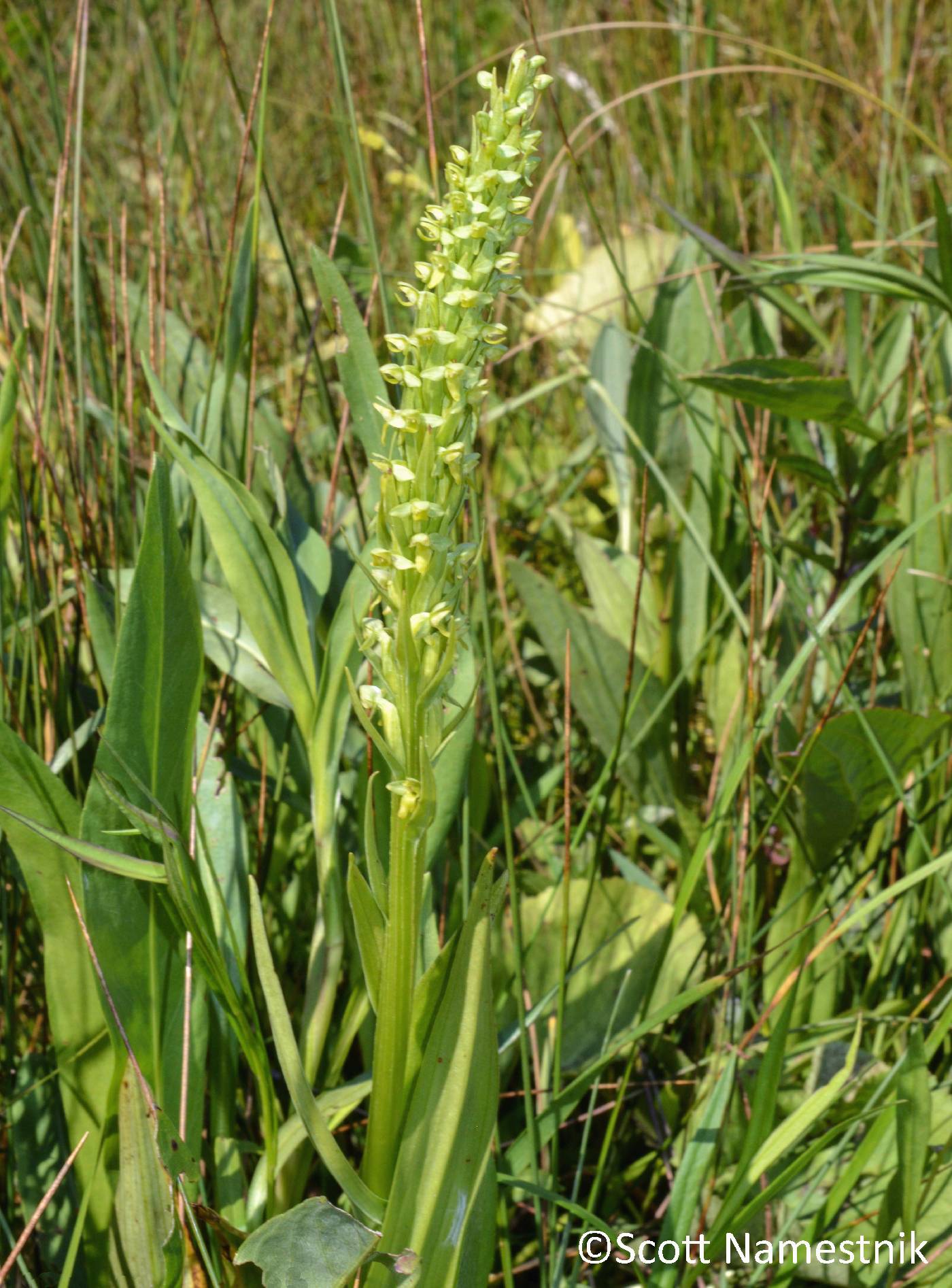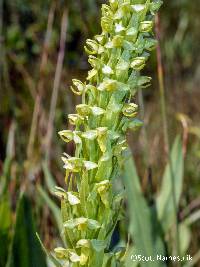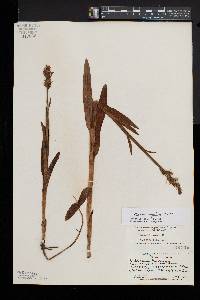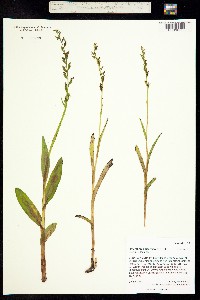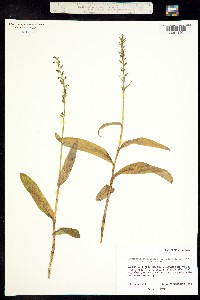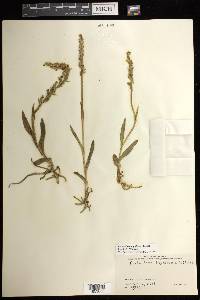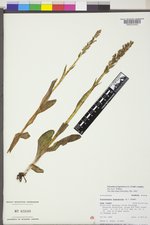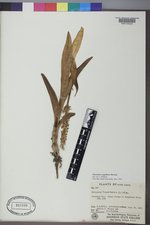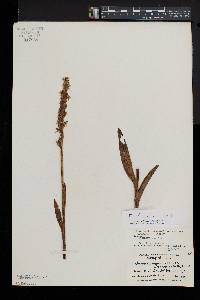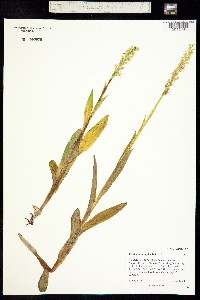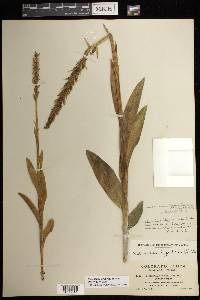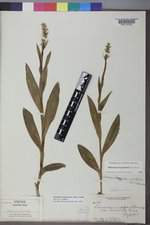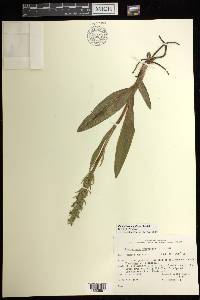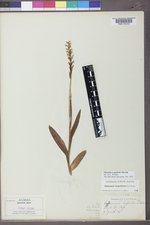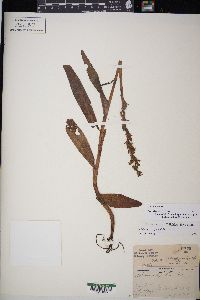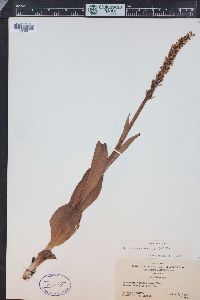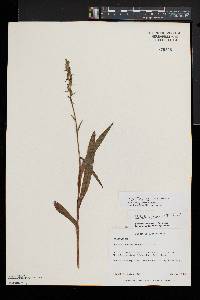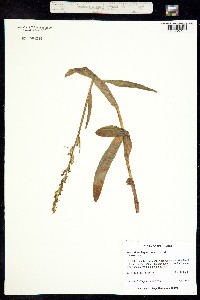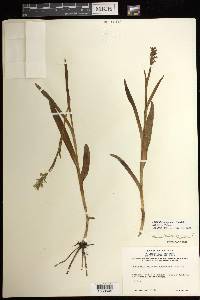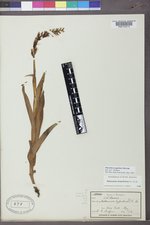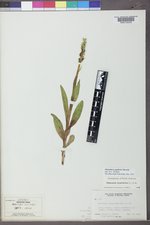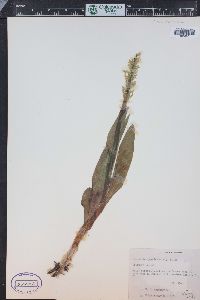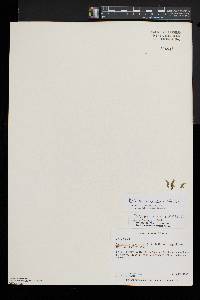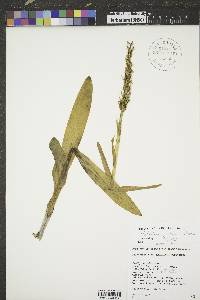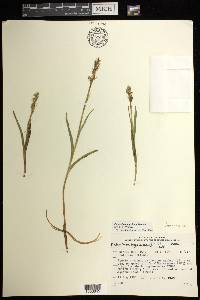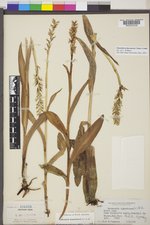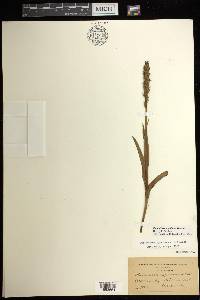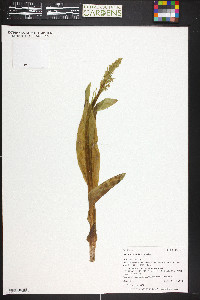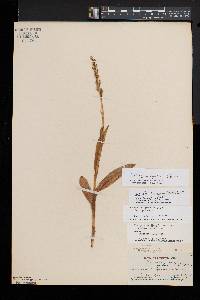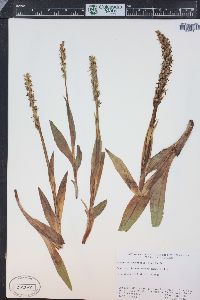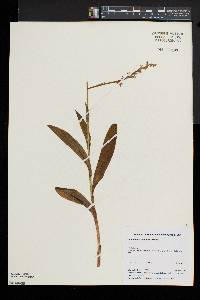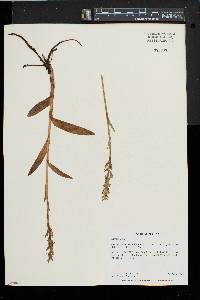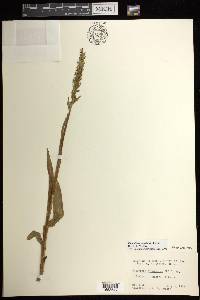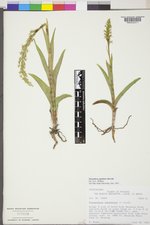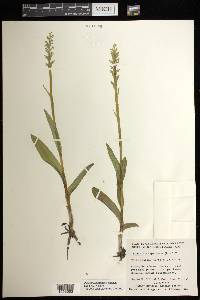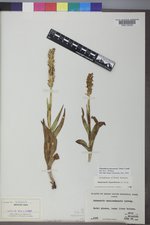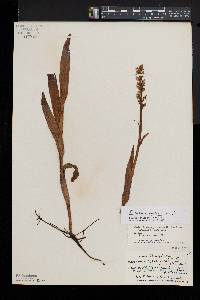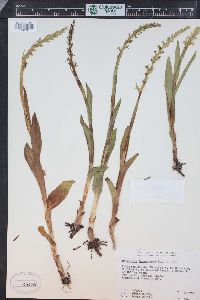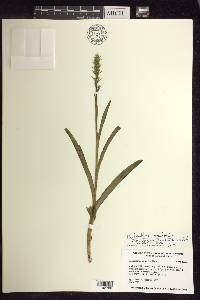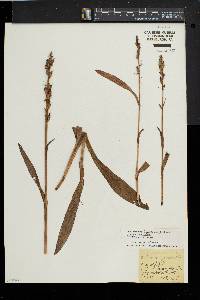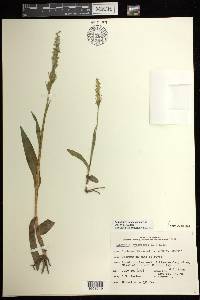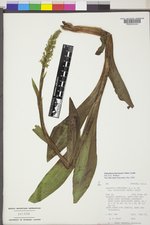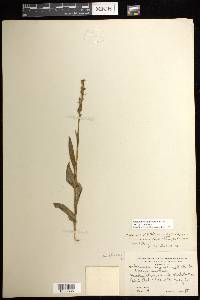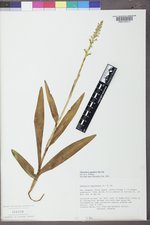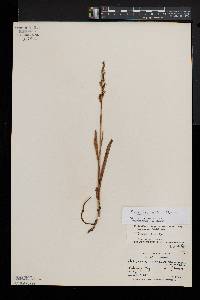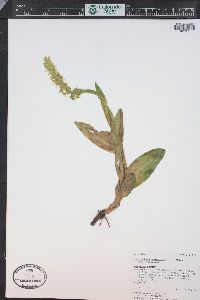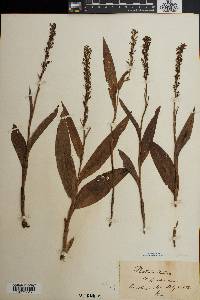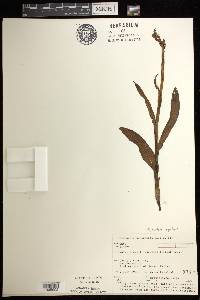Platanthera aquilonis
|
|
|
|
Family: Orchidaceae
Bog Orchid, more...northern green orchid
|
Plants 5-60 cm. Leaves few-several, ascending to arcuate-spreading, scattered along stem, gradually reduced to bracts distally; blade oblong to linear-lanceolate, 2.7-23 × 0.4-4 cm. Spikes lax to very dense. Flowers resupinate, not showy, yellowish green with dull yellowish lip, or more whitish green under cool conditions; lateral sepals spreading to reflexed; petals rhombic-ovate- to lance-falcate, margins entire; lip descending, projecting, or apex adhering to dorsal sepal and petal apices, rhombic-lanceolate to lanceolate, without basal thickening, 2.5-6 × 1-1.5 mm, base not rounded-dilated, margins entire; spur clavate or sometimes rather cylindric, 2-5 mm, apex usually broadly obtuse; rostellum lobes divergent, directed downward, very small, rounded, obscure; pollinaria straight; pollinia rotating forward and/or fragmenting, loose pollen masses free of anther sacs and trailing downward onto stigma; viscidia orbiculate; ovary rather slender to stout, mostly 5-13 mm. 2n = 42. Flowering May--Aug. Wet meadows, tundra, marshes, fens, stream banks, shores, ditches, seeping slopes, roadsides, borrow pits, mesic deciduous forest slopes; 0--2500 m; Alta., B.C., Man., N.B., Nfld. and Labr., N.W.T., N.S., Ont., P.E.I., Que., Sask., Yukon; Alaska, Colo., Conn., Idaho, Ill., Ind., Iowa, Maine, Mass., Mich., Minn., Mont., Nebr., N.H., N.J., N.Mex., N.Y., N.Dak., Ohio, Oreg., Pa., R.I., S.Dak., Utah, Vt., Wash., Wis., Wyo. Flowers of Platanthera aquilonis are usually scentless, but in the far northwest they have a sweet, pungent scent, like that of some related species. The flowers are commonly self-pollinating: the pollinia rotate forward and downward, contacting the stigma, and/or the pollen masses dissociate and are deposited on the stigma as if they had sifted downward. Platanthera aquilonis is a North American diploid species long confused with the tetraploid Icelandic P. hyperborea (Linnaeus) Lindley. Flowers of both species autopollinate, although the details of the mechanisms may differ. The two species differ in column structure and lip and viscidium shape. True P. hyperborea is similar to P. huronensis, and the relationship of these two species needs further study.
Perennial herb 5 - 60 cm tall Stem: single, erect, with scattered leaves which reduce in size gradually to bracts upward. Leaves: three to five, ascending to curved-spreading, stalkless, green, hairless, non-toothed, 2.7 - 23 cm long, 0.4 - 4 cm wide, oblong to narrowly lance-shaped, gradually reduced to bracts upward. Inflorescence: a single, erect, terminal, hairless, elongate, spike-like cluster of thirty to forty stalkless flowers with each flower subtended by a tightly erect, 1 - 2 cm long, 3 - 4 mm wide, lance-shaped bract. Flowers: stalkless, not showy, unscented, yellowish green, hairless, bilaterally symmetric with spreading lateral sepals, and center sepal and lateral petals closely positioned above lip petal, which has base modified into a nectar spur. The reproductive parts of stamens, stigma and style are fused into a column above the 0.5 - 1.3 cm long inferior ovary. Sepals: three, green, hairless, non-toothed, with two lance-shaped, 3 - 4 mm long, 1 - 2 mm wide lateral sepals spreading or reflexed on either side of lip petal. The central, uppermost sepal, which is typically only 2 - 3 mm long, 1 mm wide, and egg-shaped, points forward and is fairly low and partially covers the lateral petals, which together extend forward to form a flattened hood over the column and above the lip petal. Fruit: several, stalkless, erect, fairly plump ellipsoid capsules subtended by ascending bracts. Roots: fleshy, thickened near base. Lateral petals: two, green to yellowish green, curving up and forward over column, appressed under central sepal, hairless, non-toothed, 3 - 4 mm long, 1 mm wide, lance-shaped. Lip petal: one, central, lowermost, descending or projecting forward, very tip often curved upwards and touching hood (since self-pollinating), whitish green to dull yellowish, non-toothed, hairless, 2.5 - 6 mm long, 1 - 1.5 mm wide, lance-shaped. The base of the lip petal is modified into a 2 - 5 mm long, club-shaped to more cylindric spur with a blunt tip. Similar species: Platanthera aquilonis is a diploid species that has long been confused with the tetraploid P. hyperborea, which also self-pollinates, but only occurs in Iceland and Greenland, and has a different lip shape, column structure and pollen-bearing structure. True P. hyperborea is actually most similar to P. huronensis, which has also often been confused with P. aquilonis. That species differs though by having intensely sweet pungent scented flowers, a larger and taller open hood, a longer lip and spur (both typically at least 5 mm), and is not self-pollinating. Also very similar is P. dilatata, but it has very bright white flowers, a more erect hood, a longer spur (5 - 10 mm), a longer lip (4 - 9 mm) which abruptly widens below the middle into a rounded base, and differences in the pollen-bearing structures and pollinia. Flowering: June and July Habitat and ecology: Uncommon, in calcareous springy places such as wet meadows, pannes, fens, and mesic sand prairies. Occurence in the Chicago region: native Notes: This is another northern, boreal species that just extends south into the Chicago Region. The species was only formerly differentiated and named in 1999 by Sheviak. It has long been included under the names P. hyperborea and P. huronensis. This is a self-fertilizing diploid species with unscented flowers, while P. hyperborea is a self-fertilizing tetraploid species that only occurs in Greenland and Iceland (Sheviak 2002). Much confusion centers around the name P. hyperborea, which most floras have used for specimens of P. aquilonis and P. huronensis. Since P. aquilonis is a self-pollinating species, the aspects of the pollen-bearing structures and the pollen itself are quite different from insect pollinated species. One of the most interesting features is that the pollen does not remain in the discreet packets (pollinia), but instead the packets break apart and then loose pollen masses trail downward onto the stigma. Etymology: Platanthera comes from the Greek words platys, meaning flat or broad, and anthera, meaning anther, which refers to the wide anther of the genus. Aquilonis is Latin for north or northern, in reference to the northern distribution of this species. Author: The Field Museum From Flora of Indiana (1940) by Charles C. Deam Our specimens and reports are from our northern tier of counties. It must be very rare in Indiana. I have collected it only twice. Besides the counties shown on the map it has been reported from La Porte and St. Joseph Counties. …… Indiana Coefficient of Conservatism: C = 10 Wetland Indicator Status: FACW |

